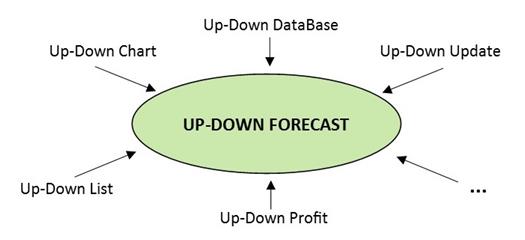EOS developed over the years many software products for technical and forecast analysis of financial markets, all belonging to a single "family" called Up-Down: they provide tools for managing and analyzing financial market data which allow, among other things, graphical, numerical and statistical processing.

Up-Down Forecast is an extremely advanced system for forecast analysis of financial markets and is among the most innovative A.i. applications.
Up-Down Forecast was one of the first attempts in decision computing, whose methodologies aim at managing with a great degree of autonomy the decision making process.
Since its first model, Up-Down Forecast history is a continuous exercise of abstraction to achieve a formal representation increasingly adhering to the multiform reality of financial markets.

Up-Down Forecast first release, dated back to 1990, was based on a neural net, which used a meritocratic criterion through technical analysis indicators. The neural net dinamically weighed the decision taken by the single indicators based on the results obtained by the indicator itself in the past: those who got the best results in the past were the ones to decide in the present. Unfortunately the limited technologic resources available at the time kept EOS to research this model any further, so EOS moved to alternative models.
Up-Down Forecast second release, in 1997, was still based on technical analysis indicators, yet applying a completely new mathematical decision-making model, aimed at a wise and conservative management and to minimizing losses, as to preserve the investment. To obtain high performances with this model, however, a large number of operations was required, as well as short sales.
The real innovation occured in 2013, when EOS decided to set aside the traditional technical analysis approach to a new one based on the Categorical Theory and on the theory of topos-theoretic bridges by Olivia Caramello in particular.
This theory main principles applied to the system allowed EOS to overcome all the limitations of the previous versions: the latest version of the model managed to obtain high performances with a small number of operations on a limited number of equities, while containing the risks, similar to the benchmark's.